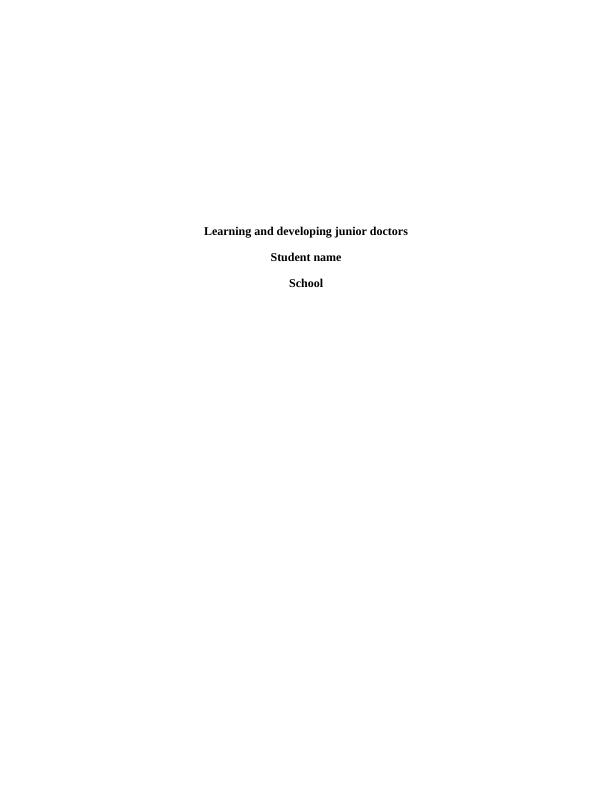Learning and Developing Junior Doctors
8 Pages1910 Words99 Views
Added on 2023-03-23
About This Document
This article discusses the learning issues faced by junior doctors in their workplaces, including communication barriers, training and selection, invisible hierarchy structure, and knowledge transfer. It offers recommendations for overcoming these barriers and improving the learning experience for junior doctors.
Learning and Developing Junior Doctors
Added on 2023-03-23
ShareRelated Documents
End of preview
Want to access all the pages? Upload your documents or become a member.
Barriers for Antimicrobial Stewardship Among Junior Doctors
|15
|4032
|351
Running Head: NT 2 nursing transition nurses
|9
|2497
|411
Inclusion Support Plan Template: Early Childhood Education Workbook - Subject 10
|7
|1716
|191
HEALTH CARE. 1. : HEALTH CARE. Health care. Name of the
|3
|439
|1
Leadership Development Programs for Early Career Nurses
|12
|3192
|351
Improving Communication Skills for End-of-Life Patients
|14
|4672
|304



